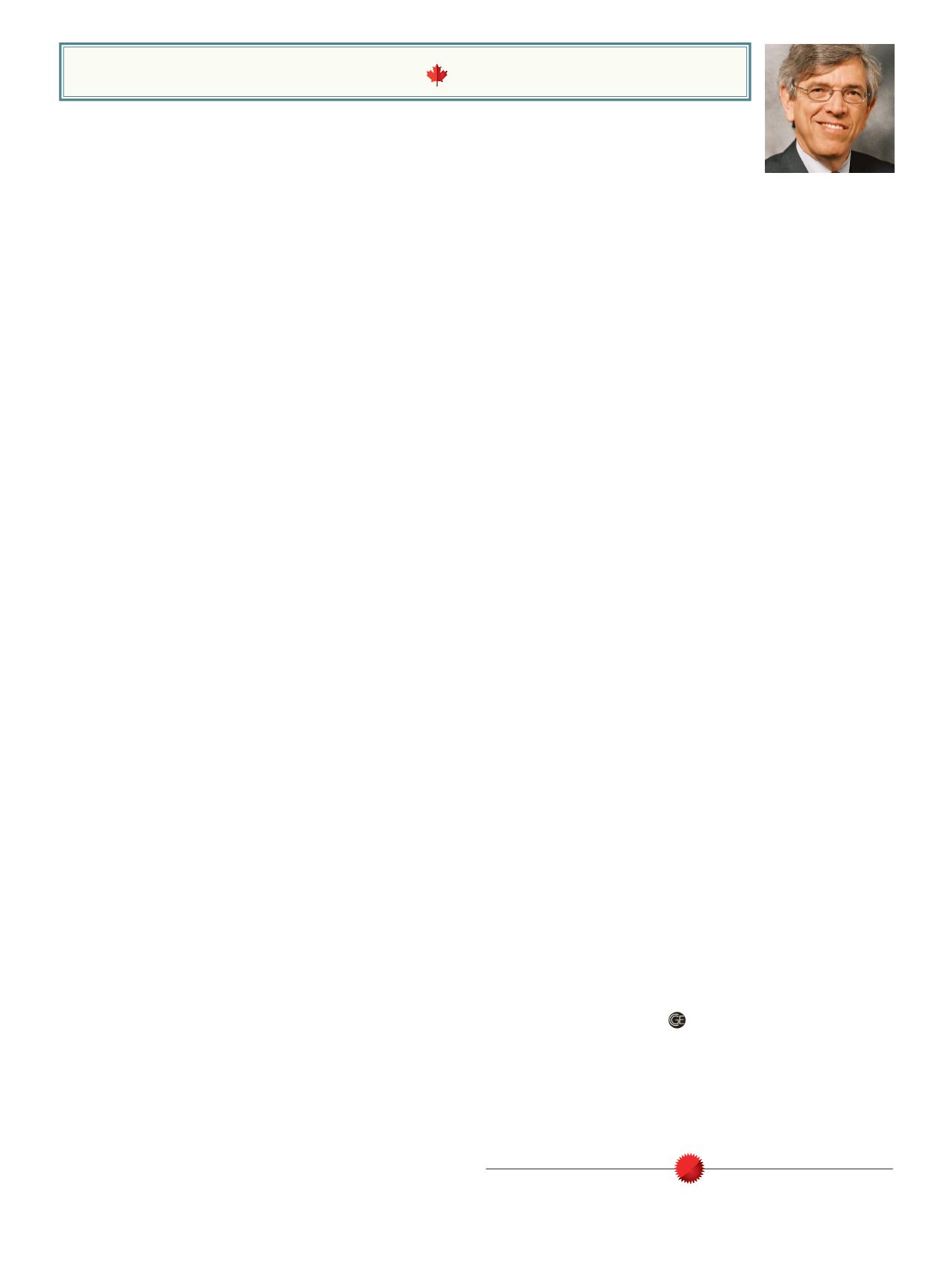

30
/ Canadian Government Executive
// September 2016
T
he Trudeau Government has been off and running for
almost one year. Despite its third party status before the
election, it has been quick out of the blocks, with wide-
ranging policy announcements in all sectors of Cana-
dian society. As a general rule, Trudeau has brought a freshened
view of the activist role of the federal government within the
particularities of the Canadian federation. His balanced-gender
Cabinet, consensus-seeking behaviour, bold initiatives in elec-
toral and senate reform, and a penchant to consult to Canadians
in more than 100 policy arenas have all signalled that the federal
government is going to act and be governed differently than any
other previous government—not just Stephen Harper’s.
At the recent August Cabinet retreat, Trudeau emphasized that
the theme of the get together was relationship-building. Howev-
er, given the timing of the meeting he also took advantage of the
gathering to remind cabinet colleagues that the first phase of his
government’s term was nearing completion and it was now the
appropriate time to make decisions that must be implemented
before the next general election.
At the cabinet retreat, Ministers will also have had a briefing
on the state of the economy and its prospects for growth in the
next few years. For the government to implement its ambitious
spending agenda it now be apparent to all cabinet ministers that
the economy will not generate sufficient new revenues to pay for
their many expensive election promises.
All of this serves as backdrop to one of the most innovative and
potentially important actions taken by the Prime Minister dur-
ing his transition to power in 2015. At the time of swearing in of
the Cabinet, the government announced the creation of a Cabinet
Committee on Agenda, Results and Communications. According
to the government website, the committee, which is chaired by
the Prime Minister, sets the government’s forward agenda, tracks
progress on priorities, and considers strategic communications.
Given the importance of this machinery change in the execu-
tive functions of the government has spawned a mini industry in
Ottawa that is designed to support the Cabinet Committee. As a
starting point, the government created a new secretariat within
the Privy Council Office, led by Matthew Mendelsohn (a former
Ontario government Deputy Minister) to ensure the success of
the Cabinet Committee and to work with the Treasury Board Sec-
retariat in realizing its full potential.
In this regard, the President of the Treasury Board, Scott Brison,
has been given a central role in coordinating the work of depart-
ments in tracking the results of government programs. Evidence
of his pivotal position is found in his mandate letter that instructs
him to “review policies to improve the use of evidence and data in
program innovation and evaluation and … conduct a review of tax
expenditures and other spending to reduce poorly targeted and
inefficient measures, wasteful spending, and government initia-
tives that are ineffective or have outlived their purpose.”
Furthermore, the Treasury Board Secretariat has given some
backbone to these good intentions by announcing a new Policy on
Results and a revised Results-based Management and Account-
ability Framework (RMAF). One particularly important element
of the results policy has been the appointment of a Chief Results
and Delivery Officer (CRDO) to serve as a point person for all of
these new activities.
At the heart of this government-wide exercise is measuring the
outcomes of all government programs and linking them back to
future spending decisions. All modern governments face the same
dilemma of not having enough revenue to pay for all their elec-
tion platform promises. And since, in the short term, the economy
is not likely to generate enough new revenues for their require-
ments, it makes good sense to look at current spending commit-
ments for inefficiencies and underperforming programs.
The federal government has done many similar cost contain-
ment and evaluation efforts over the past 40 years when it first
attempted to link spending to results. Most of these exercises have
not been particularly effective but some like Program Review in
1994 were able to slash billions of dollars from the annual spend-
ing cycle in order to reallocate tax revenues. There are many com-
plex reasons why previous efforts have failed but usually it was
the failure of the government to make the hard decisions to aban-
don underperforming programs or the lack of objective and verifi-
able evidence regarding the effectiveness of individual programs.
As the government enters the second year of its four-year man-
date it is facing a sluggish economy with only limited prospects
for economic growth. Consequently, it is imperative that the gov-
ernment “double down” on its efforts to ensure that the data are
available for the Cabinet Committee on Agenda, Results and Com-
munications so that it can make the difficult spending decisions in
order for them to implement the resulting policy decisions before
the 2019 election. It is very likely that the upcoming work of the
Cabinet Committee with the awkward name of “Agenda, Results
and Communications” will, in the final analysis, define the success
of the Trudeau government.
D
avid
Z
ussman
is a Senior Fellow in the Graduate School
of Public and International Affairs at the University of
Ottawa and is Research Advisor to the Public Sector
Practice of Deloitte.
dzussman@uottawa.ca.The Last Word
David Zussman
The Trudeau Government and Results
web
http://canadiangovernmentexecutive.ca/author/davidzu/THE DEST INAT ION 2020 LEADERSHI P JOURNEY














